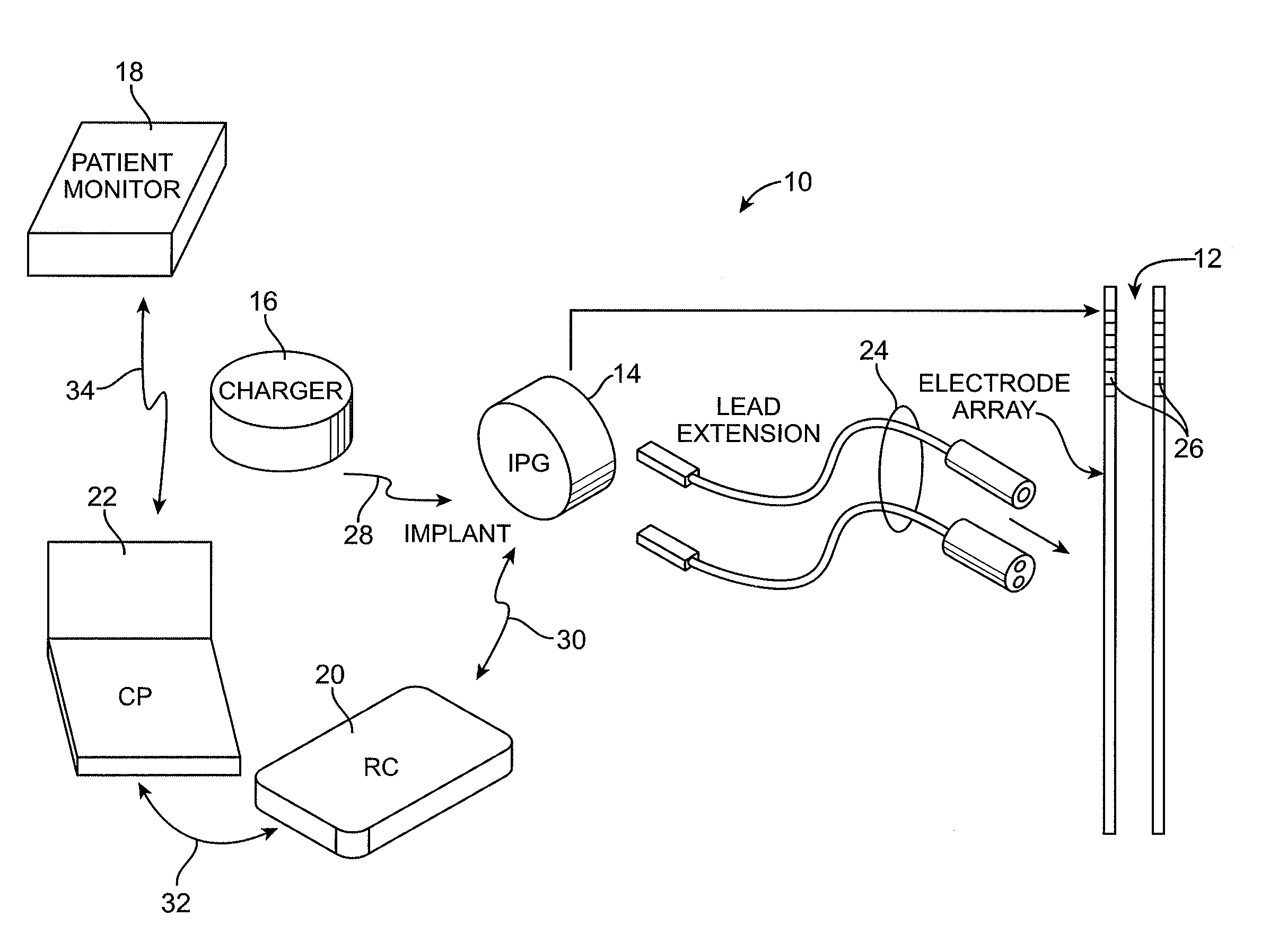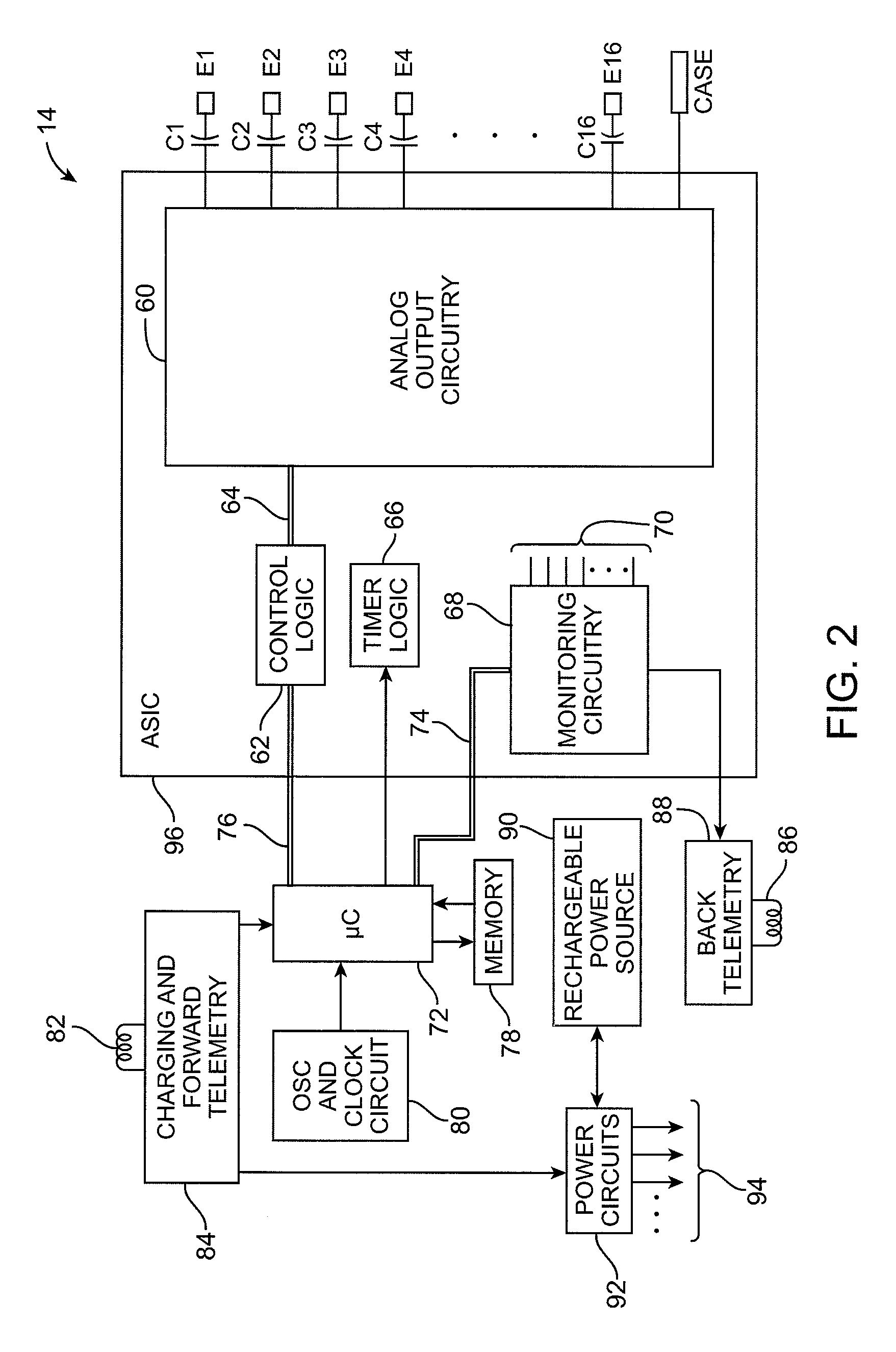Automated fitting system for deep brain stimulation
a deep brain stimulation and automatic fitting technology, applied in the field of movement disorders, can solve the problems of difficult observation, difficult to set stimulation parameters appropriately, and take a long time to become apparent, so as to improve the status of the dysfunction
- Summary
- Abstract
- Description
- Claims
- Application Information
AI Technical Summary
Benefits of technology
Problems solved by technology
Method used
Image
Examples
Embodiment Construction
[0028]At the outset, it is noted that the present invention may be used with an implantable pulse generator (IPG), radio frequency (RF) transmitter, or similar neurostimulator, that may be used as a component of numerous different types of stimulation systems. The description that follows relates to a Deep Brain Stimulation (DBS) system. However, it is to be understood that, while the invention lends itself well to applications in DBS, the invention, in its broadest aspects, may not be so limited. Rather, the invention may be used with any type of implantable electrical circuitry used to stimulate tissue for the treatment of a dysfunction, such as, e.g., a motor dysfunction.
[0029]Turning first to FIG. 1, an exemplary DBS system 10 constructed in accordance with one embodiment of the present inventions generally includes one or more (in this case, two) implantable stimulation leads 12, an implantable pulse generator (IPG) 14 (or alternatively RF receiver-stimulator), an external char...
PUM
 Login to View More
Login to View More Abstract
Description
Claims
Application Information
 Login to View More
Login to View More - R&D
- Intellectual Property
- Life Sciences
- Materials
- Tech Scout
- Unparalleled Data Quality
- Higher Quality Content
- 60% Fewer Hallucinations
Browse by: Latest US Patents, China's latest patents, Technical Efficacy Thesaurus, Application Domain, Technology Topic, Popular Technical Reports.
© 2025 PatSnap. All rights reserved.Legal|Privacy policy|Modern Slavery Act Transparency Statement|Sitemap|About US| Contact US: help@patsnap.com



